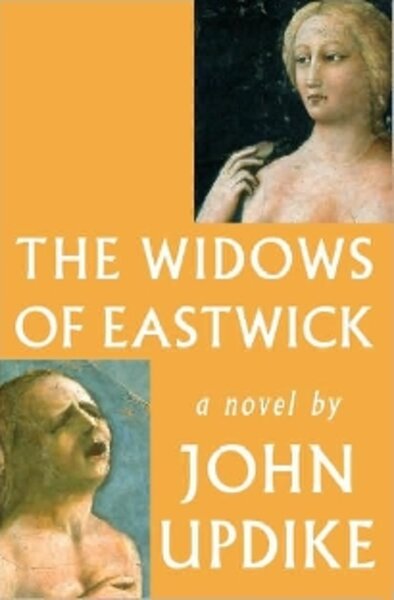The Widows of Eastwick
Loading...
When the three weird sisters from “Macbeth” asked, “When shall we three meet again, in thunder, lightning, or in rain?” it’s probable that they didn’t have an all-inclusive tour of the Great Wall and Yangtze River in mind.
Nonetheless, that’s where The Widows of Eastwick meet up 30 years after killing a woman out of jealousy. “The Witches of Eastwick,” by multiple award-winning author John Updike, was an unpleasant little book that didn’t do well by either its author or feminism. It probably would have fallen out of cultural memory were it not for the (also not very good) movie featuring Jack Nicholson with full-on jack-o’-lantern leer.
When last we saw them, Alexandra was a potter and earth-mother type, sharp-tongued Jane played the cello and neglected her brood of children, and Sukie worked for the local newspaper and had lots of affairs.
Actually, all of the women were indifferent to motherhood. They preferred to stay out all night drinking in Darryl Van Horne’s hot tub.
Then he married a younger woman, and after the witches hexed her, left town with her adolescent brother. (If using a homosexual man as a plot device to punish “unnatural” women strikes you as creepy, well, it was. And Updike revives the technique in the sequel.)
Slinking away from Eastwick, the women conjured new husbands for themselves. Lexa married a cowboy-potter and settled in Taos, N.M.; Jane married a Boston banking type; and Sukie ended up with a philandering computer salesman who liked to make fun of her new profession as a writer of romance novels.
Age hasn’t exactly turned them into sweet little grannies – Jane still has a mouth like a truck driver, and Sukie still spends much of her time thinking about or having sex. (Updike isn’t interested in “Golden Girls”-style humor here; his language is explicit and quite graphic.)
Now widowed and largely ignored by their families, they look up the members of their old coven and head back to the place where they once practiced “a half-baked suburban variety of witchcraft.”
The desire to reunite with the women who knew them when they were at the height of their beauty and power makes sense. If mid-20th-century women felt powerless, try being a 70-something woman today.
“Jane, we’re old. No one wants us, except maybe our grandchildren for the first half-hour of a visit,” Alexandra says. “It’s very freeing, I find.”
Updike is gentler with his aging witches than he ever was when they were in their prime, allowing them some rueful humor and scenes of genuine friendship.
“Listen doll: we’re ancient. It’s the inner woman that matters now,” Jane tells Alexandra before the two head off down the Nile. “Well, I’m an inner woman wrapped in too much outer. And I have twinges all over my body,” Alexandra replies.
Even if Updike is more charitable with his characters, at least one person from their past is determined to punish them for their crimes.
When the witches try to restart their coven (in a ridiculous scene involving Cascade detergent and jug wine), one of them drops dead. Is it an aneurysm or supernatural murder? And who’s next?
But first, they travel.
The novel opens with 100 pages of travelogue, as the widows tour Canada, Egypt, and China. (The Canada trip that opens the book is more boring than a slide show, since at least with that, you’d be able to look at pictures of the Rockies.)
The Eastwick reunion isn’t the success for which Sukie and Jane were hoping. Alexandra is quite clear about its being a terrible idea, but her daughter who still lives in the area wanted her to come, so....
This would be more plausible if Alexandra cared about spending time with her daughter, but Updike needs a reason to get all the witches back to Eastwick, however contrived.
The town itself has been gentrified – stripped of its “messy charm” – much to the disgust of Jane.
“And the younger people, the age we were when we were here — ssso tiresome ... toned-up young mothers driving their overweight boys in overweight S.U.V.’s to hockey practice 20 miles away, the young fathers castrated namby-pambies helping itty-bitty wifey with the housekeeping, spending all Saturday fussing around the lovely home. It’s the ’50s all over again, without the Russians as an excuse.”
(Personally, I find it hard to believe that a single mother of four would ever disparage a man willing to do chores, but I’m willing to cede generational differences here.)
Jane’s irascible wit and Updike’s observations on aging help alleviate the goofy magic and an icky subplot involving Sukie and Van Horne’s old lover. “Widows” isn’t as misogynistic as its predecessor, but it’s hard to imagine anyone but Updike acolytes finding it anything but a well-written mess.
Yvonne Zipp regularly reviews fiction for the Monitor.






